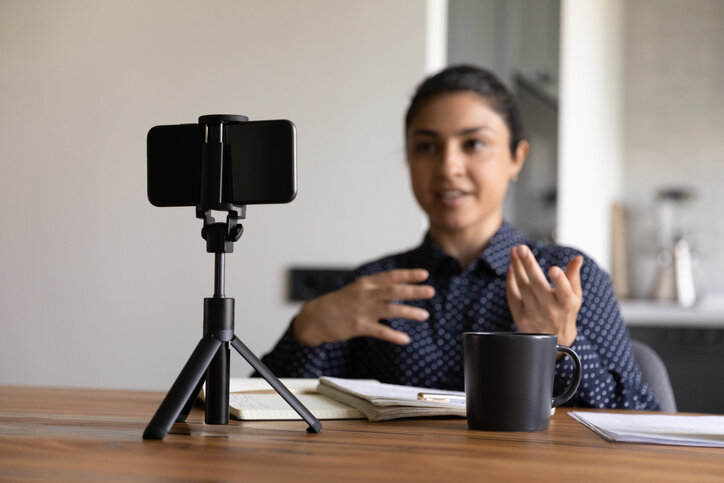YouTube and TikTok have become resources for teachers to reach more students, but not everyone who uploads educational content to the Internet is a teacher. Is their material still valuable?
Video content represents one of the most consumed products worldwide. A user over the age of 18 spends on average 41.9 minutes on YouTube daily and 52 on TikTok. Beyond entertainment, many netizens enter video platforms not only to entertain themselves but also to learn.
In the United States, 51% of the users turn to YouTube to consult video tutorials to learn how to do things. Tik Tok has emerged as a powerful platform for teachers. Some teachers have uploaded lessons and gained a fan base of over 900,000 users.
Given this enormous interest in video as an educational resource, it is important to discern which contents are made for entertainment, editorial opinions, and didactic purposes. How can we differentiate the producers who teach from those who offer analysis or guidance with sound arguments?
Edutubers: Teachers on Video
In previous articles, we have written about teachers who take advantage of the YouTube platform to increase the reach of their lessons and followers. For several years, the term “EduTuber” was used generally to refer to teachers who share primarily didactic content to cover the learning requirements of a school curriculum.
Today many of these teachers are also on TikTok under the hashtag #Teachertiktok. A principal way to differentiate an EduTuber or TikTok Teacher from other content creators is that they are usually trained teachers, and their content is primarily for teaching.
Influencers: Entertainment, outreach, and opinion
The YouTube channel Influencer Marketing Hub offers a complete definition of who influencers are and what they do. It describes them as people who have gained significant popularity on their respective platforms, amassing a vast number of followers. For this reason, their content can more easily go viral, and they can build a brand based on their recognition.
Influencers mostly post topics they are passionate about, know, or want to express their opinions. This can intersect with educational subjects. An example is Anna Akana, an American actress, director, and writer who dedicates some of her videos to raise visibility and awareness about mental health issues, the usefulness of therapy, and emotional intelligence to forge healthy relationships.
Mythical Kitchen is another example of how entertainment content can have an educational aspect. On this channel, chef Josh Scherer and the comedian and writer Emily Fleming reproduce emblematic dishes linked to historical moments such as the last dinner aboard the Titanic, or the first meal of the astronauts who landed on the moon in 1966. The videos are not a history lesson but present enough references to be good supporting material, arousing interest in students to learn more about specific historical moments.
Analysts: To read between the lines
The job of an analyst is not to instruct. Still, their contents can be good support material that helps students develop comprehension and analytical skills, valuable tools for continuous learning. An analyst like Beau of the Fifth Column, for example, will not teach you history, but his content can help you understand why historical events like the capture of Kabul by the Taliban happened the way we saw it.
The videos of Ian Daskin, creator of Innuendo Studios, are not a sociology class nor presentations of the psychology of radicalization. Daskin himself is a visual artist more than anything else. Still, his exhaustive research and way of communicating are excellent for introducing students to complex topics such as the radicalization of the right and toxic masculinity.
Critics: The art of opinion
A critic’s job is simply to offer their point of view on a particular subject. This is why we must be careful when selecting their content as an educational resource. Not all critics on video platforms are experts, and not all available opinions stem from academic work, degrees, or vast experience.
This does not mean that all worthwhile critics have to have doctorates in the field or decades of work in the area about which they comment for their content to be helpful in the educational environment. El Nictalope, for example, is a young literary critic without a long career in letters, but the process by which he does his reviews entails a solid methodology of academic standards. The experience of Katherine Steele as an actress and theatrical performer allows her to present reviews, opinions, and editorial notes on the technical and narrative aspects of musical productions in the theater.
There is no universal criterion for assessing a critic as a reinforcer of a didactic intention. However, we can affirm that these contents serve learning purposes when they start from the idea of sharing knowledge acquired through experience and study and employ rigorous methodology. In this way, opinion is not the center of the conversation; it is the vehicle to transmit that knowledge.
What do you think of educational content on video platforms? Have any EduTubers, analysts, or critics helped you supplement your class material? Do you think there should be a clear differentiation of video generators to distinguish educators, analysts, influencers, and critics? Let us know in the comments.
Translation by Daniel Wetta.
This article from Observatory of the Institute for the Future of Education may be shared under the terms of the license CC BY-NC-SA 4.0 
)
)


)